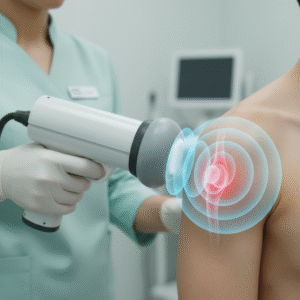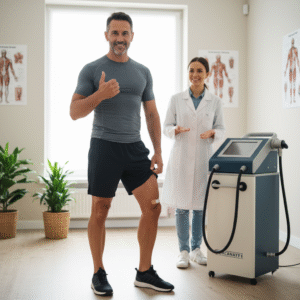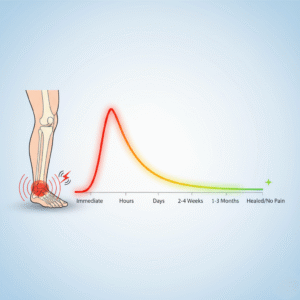
When it comes to treating stubborn pain and chronic injuries, Extracorporeal shockwave therapy (ESWT) has gained serious attention in recent years. Many people choose this treatment because it’s non-invasive, requires little to no downtime, and can deliver lasting pain relief for conditions like plantar fasciitis, tendonitis, and shoulder pain.
But if you’re considering this treatment for the first time, it’s natural to wonder: “How will I feel after shockwave therapy?”
The answer depends on the condition being treated, your pain tolerance, and how your body responds. In this guide, we’ll explain exactly what to expect after a session, how recovery feels over the following days, and why professional care matters to ensure optimal results.
Understanding Shockwave Therapy: A Quick Overview
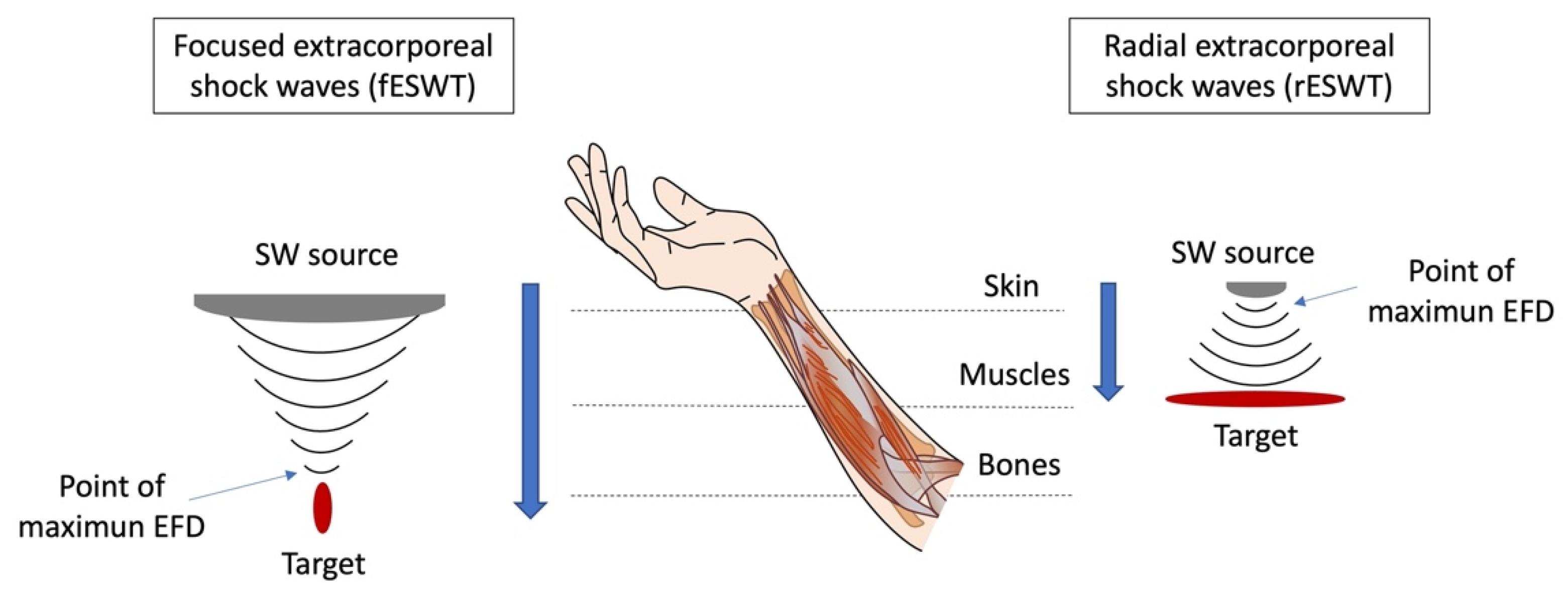
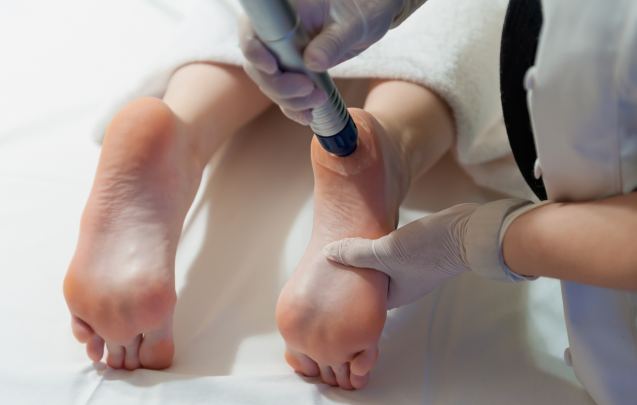
Shockwave therapy works by sending acoustic energy waves into the affected tissue. These waves stimulate the body’s natural healing process, increase blood flow, and break up scar tissue or calcifications that may be causing pain.
It’s commonly used to treat:
- Plantar fasciitis
- Tennis elbow
- Achilles tendinopathy
- Shoulder calcifications and rotator cuff injuries
- Hip, knee, and lower back pain
The session itself usually lasts 10–20 minutes. Most patients describe the sensation as “tapping” or “pulsing” on the skin. Discomfort may occur during treatment, especially over sensitive areas, but it’s typically manageable, and many people say it feels better than living with chronic pain.
Immediately After Treatment: What to Expect
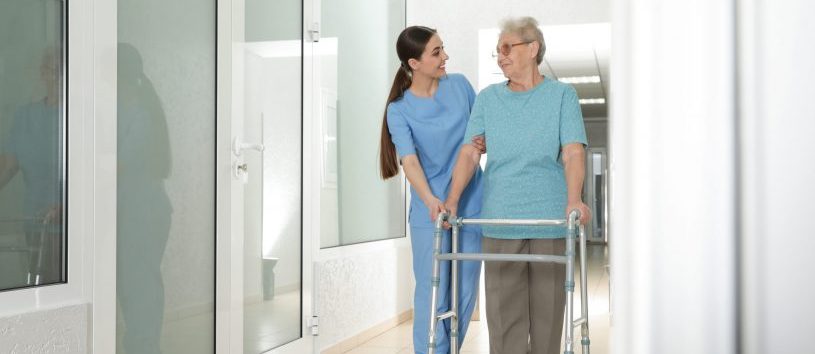
Right after your shockwave therapy session, you might notice some mild soreness, redness, or sensitivity in the treated area. This is a normal part of the healing process and usually resolves within a few hours to a day.
Common sensations you might feel:
- A warm, tingling feeling in the treated area.
- Mild bruising or slight swelling (in some cases).
- A temporary increase in discomfort, similar to post-workout soreness.
- Immediate but partial pain relief for some patients.
Important: Many people report feeling a reduction in pain right after treatment. This happens because shockwave therapy can temporarily numb pain receptors and stimulate blood flow. However, this relief can be short-lived before the healing process fully sets in over the next several weeks.
Pro Tip: Wear comfortable shoes or clothing after treatment, especially if your session targeted your feet, knees, or hips.
The First 24–48 Hours After Shockwave Therapy
The first 1–2 days after treatment are when most people notice the greatest change in how their body feels. It’s common to experience:
- Soreness similar to mild muscle strain, especially around the targeted tendon or muscle.
- Stiffness or sensitivity when walking, standing, or performing normal movements.
- Reduced pain intensity in some cases as inflammation begins to calm down.
This temporary discomfort is part of the body’s inflammatory healing response, which is exactly what the treatment is designed to trigger. Unlike pain from injury, this soreness is a positive sign that healing is underway.
What to avoid during this time:
- Applying ice or anti-inflammatory medications unless specifically instructed (they may interfere with the healing response).
- Strenuous activity or exercise on the treated area.
- Long periods of standing, running, or heavy lifting.
What helps:
- Gentle movement to keep blood flowing.
- Rest and elevation if soreness is more noticeable.
- Comfortable, supportive footwear.
Day 3 to 7: Signs of Progress
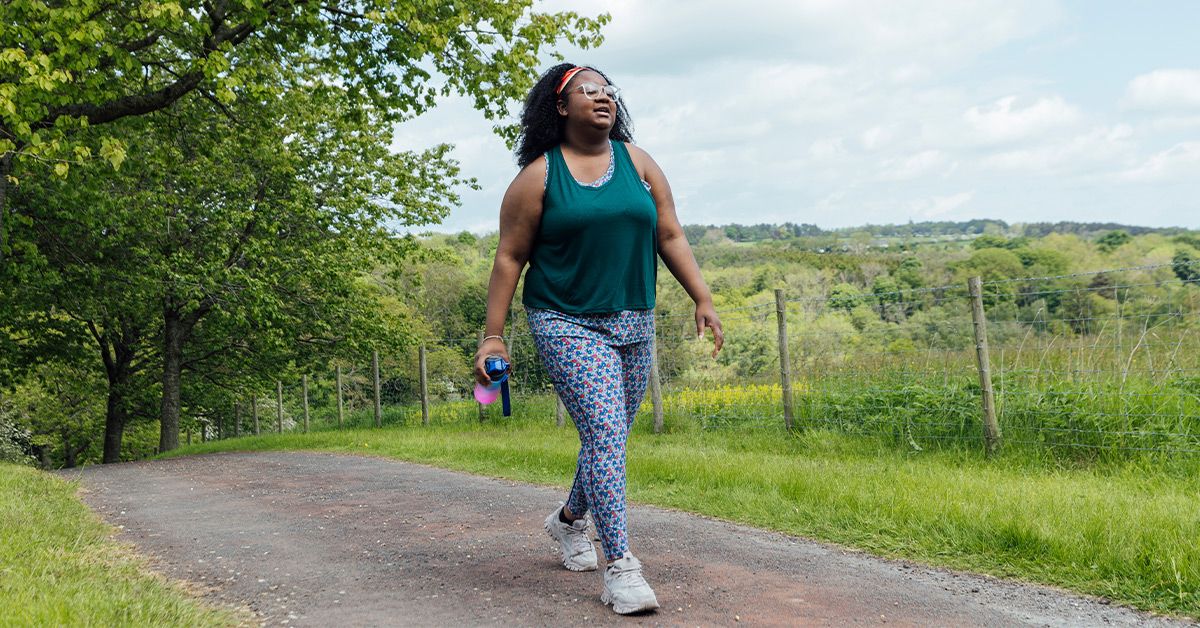
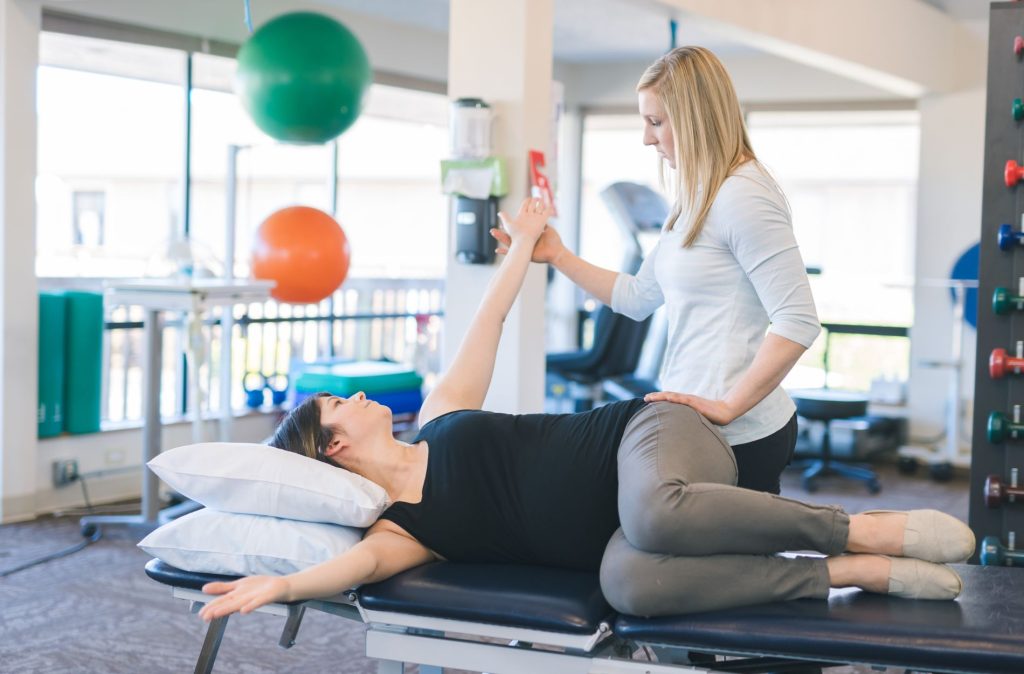

In the days following your treatment, the treated tissues continue to regenerate and heal. Most people start noticing subtle but meaningful improvements in pain, mobility, and inflammation around this time.
You might feel:
- Less sharp pain and more dull, fading soreness.
- Better flexibility or range of motion.
- More confidence walking, standing, or using the treated area.
Depending on the severity of your condition, some individuals may need multiple shockwave therapy sessions, typically spaced one to two weeks apart, to achieve lasting results.
Service Note: Our clinic creates personalized treatment plans that ensure your recovery stays on track with professional follow-up and guidance.
Week 2 and Beyond: Healing Takes Hold


By week two, most patients experience a noticeable reduction in pain and improved function. Since shockwave therapy stimulates the body’s natural collagen production and tissue repair, the benefits continue to build over time.
You may notice:
- Stronger, less tender tissue in the treated area.
- Greater comfort during daily activities.
- More energy and mobility with less guarding or limping.
Keep in mind that full healing can take several weeks, especially for chronic conditions. Some patients experience peak results between 8–12 weeks after completing their treatment plan.
Normal vs. Concerning Side Effects
Mild and temporary effects like soreness, bruising, or tenderness are common and not a cause for concern. However, you should contact your provider if you experience:
- Severe swelling or pain that worsens over several days.
- Numbness, tingling, or sudden loss of mobility.
- Signs of infection (very rare).
When performed by trained professionals, shockwave therapy is generally very safe, with minimal risks and no need for anesthesia or surgery.
Why Professional Treatment Matters
While shockwave therapy devices are sometimes marketed for home use, professional treatment offers clear advantages:
- Accurate targeting of problem areas
- Proper intensity and frequency settings
- Safer application with minimal side effects
- Structured aftercare and progress tracking
Our experienced team uses clinic-grade technology and personalized care to ensure you get maximum pain relief and recovery without unnecessary discomfort.
How to Support Your Recovery After Treatment
To make the most out of shockwave therapy, follow these professional aftercare tips:
- Stick to your recommended activity modifications for the first 48 hours.
- Wear proper footwear for foot and leg conditions.
- Stay hydrated and maintain healthy nutrition to support tissue repair.
- Attend follow-up appointments as advised.
- Avoid pain-masking strategies that may interfere with healing (e.g., excessive icing or anti-inflammatory drugs without guidance).
Think of shockwave therapy as kickstarting your body’s own healing process. Your aftercare routine is the key to maximizing its effectiveness.
When to Expect Results
Some people feel significant pain relief right after the first session, while others may need a few treatments before noticing real progress. Factors that influence your timeline include:
- How long have you had the condition
- Your overall health and activity level
- The specific area being treated
- Adherence to aftercare instructions
Most patients see improvement after 3–5 sessions, spaced 1–2 weeks apart.
Realistic Recovery Expectations
It’s important to keep your expectations realistic. Shockwave therapy isn’t an overnight fix, but it works with your body to create sustainable, long-term healing. Instead of masking symptoms, it helps address the root cause of pain and tissue damage.
Key takeaways:
- Mild soreness after treatment is normal and temporary.
- Pain relief typically builds over several weeks.
- Professional aftercare maximizes your results.
- Long-term improvement is possible for many chronic conditions.
Call to Action: Experience Lasting Pain Relief
If you’re tired of living with chronic pain, professional shockwave therapy may be the solution you’ve been looking for. Our expert team delivers safe, effective, and customized treatments designed to help you move comfortably again, without surgery or long recovery times.
Contact us today to schedule your consultation and take the first step toward pain-free living.

